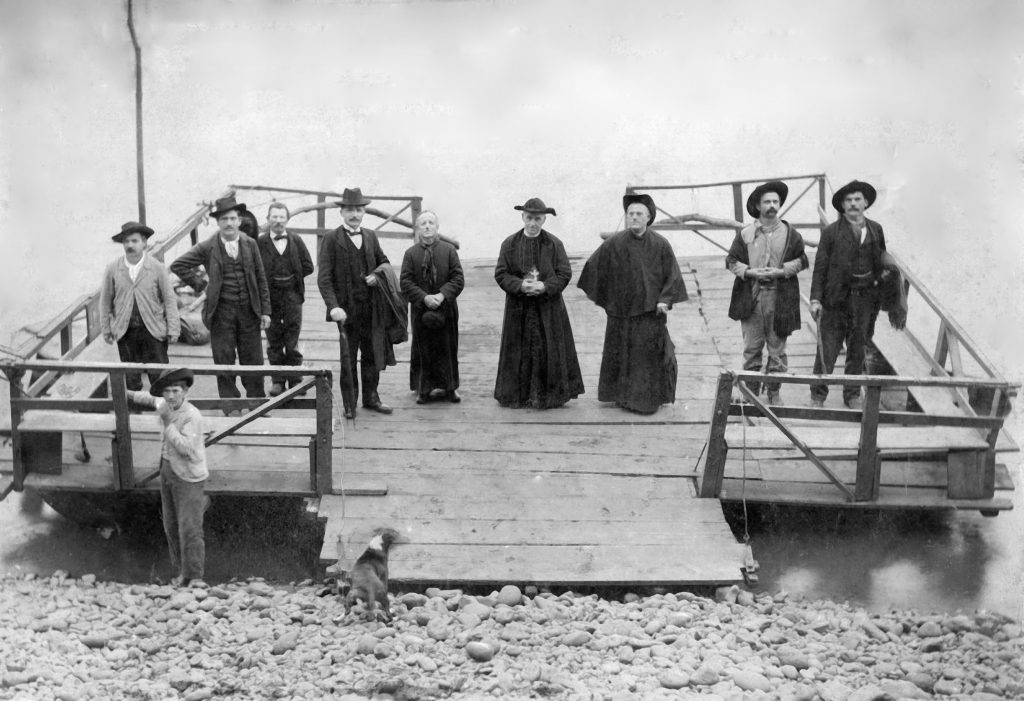Giovanni Battista Scalabrini: a holy bishop, from Piacenza to the world
The congregation of St. Charles’ missionaries the Scalabrinians: birth of a religious order
The congregation of St. Charles’ missionaries the Scalabrinians: birth of a religious order
MENU
During the thirty years that Scalabrini was bishop of Piacenza, around 8 million Italians were forced to leave their homeland.
Deprived of their savings for travel expenses, crammed into the unhealthy holds of ships and often exploited with slavery contracts once they reached their destination.
Scalabrini, who had already become acquainted with the phenomenon during his pastoral visits to the parishes of his diocese, finding himself one day in Milan near the station was deeply disturbed, when he saw a crowd of poor people leaving for foreign countries.
In his pamphlet ”, he recounts: ‘Who knows what an accumulation of misfortunes and privations makes such a painful step seem sweet to them! …How many disillusionments, how many new sorrows the uncertain future prepared for them? …How many, though they find the bread of the body, will lack the bread of the soul, no less than the first necessity, and will lose the faith of their fathers in an entirely material life? Faced with such a sorry state of affairs… I feel humiliated as a priest and as an Italian and I ask myself: How can I help them?
Scalabrini addressed the problem both on the level of concrete realizations, as a Christian reflection, and on the level of a concrete proposal for state legislation. He perceived it as a social problem, but also as an opportunity for concrete collaboration between church and state, as a danger for migrants’ loss of faith, but also as a chance to evangelise other countries.
In 1887 (the year the pamphlet was published) he founded the Congregation of the Missionaries of St. Charles for the assistance of Italian emigrants and the following year he intervened forcefully in the national debate on emigration with another text, ‘Draft Law on Italian Emigration’.
In 1889, he founded a lay association, which later took the name ‘St. Raphael Society’ and set up committees in various cities, particularly seaside towns. It promoted religious and medical assistance to migrants during the journey, opened schools for the maintenance of Italian culture and ensured legal assistance, a series of initiatives that helped emigrants overcome initial difficulties.
Tireless, he held conferences in many Italian cities to mobilise public opinion on emigration issues and in 1895 founded the Congregation of the Missionary Sisters of Saint Charles.
He himself made two trips, to the United States and Brazil, visiting Italian communities and his Missionaries.
Shortly before his death, he asked the Holy See to create a Central Commission for Catholic emigrants of all nationalities with these words: “no more suppressions of peoples, but mergers, adaptations in which the different nationalities meet, cross paths, reinvigorate themselves and give rise to other peoples, in which, even in their dissimilarity, specific characters and specific religious and civil tendencies predominate…” and he asked himself: “What would be the point of sending missionaries into the world to spread the Christian faith among the infidels, if we were not then concerned about the millions of Christian migrants, who already possess this faith but risk losing it, because they are left to themselves? ”
Please , update your browser


